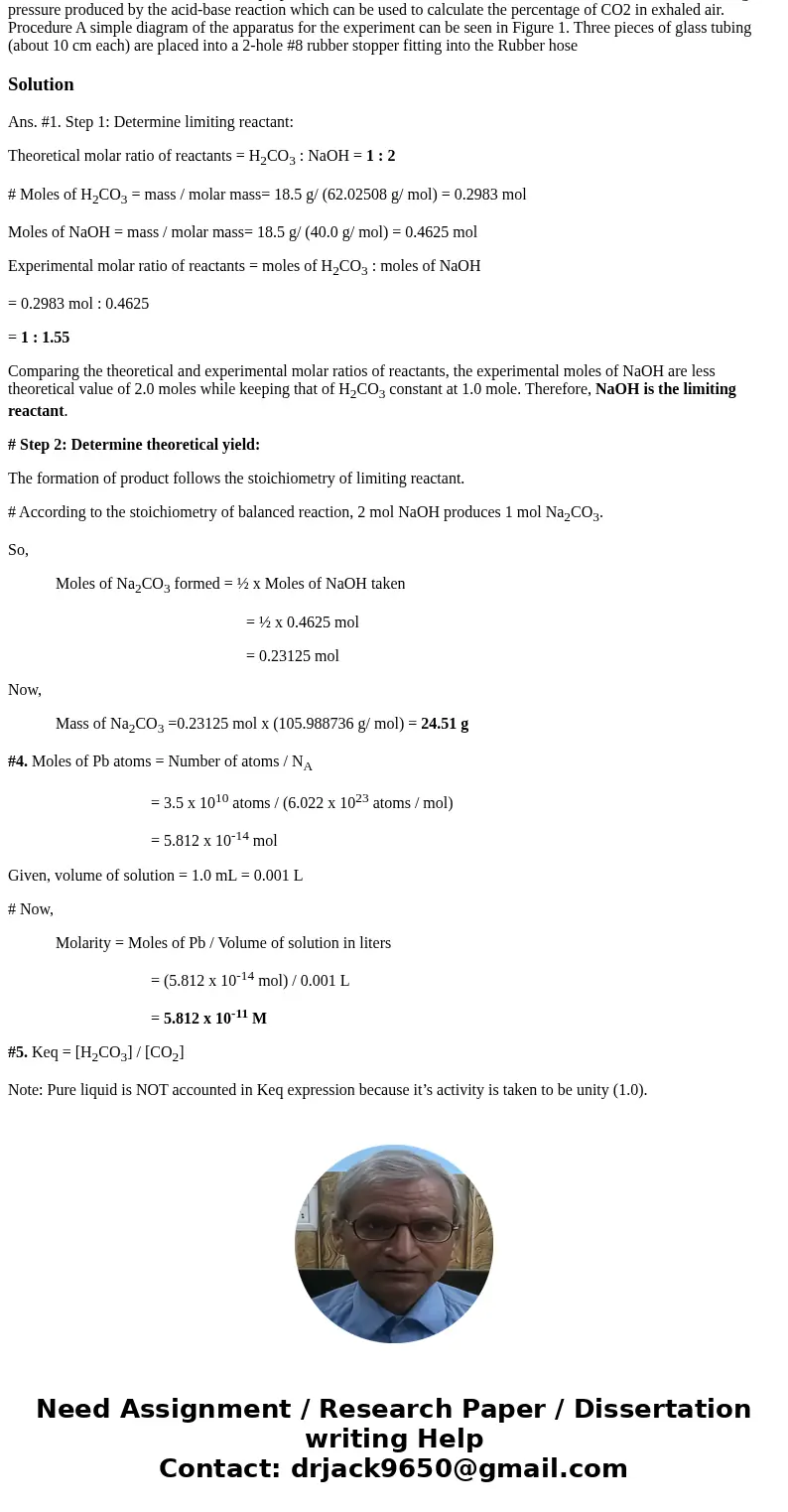Can I het help eith 1 4 and 5 17 CO2 in Breath An AcidBase R
Can I het help eith 1, 4, and 5
17 CO2 in Breath: An Acid-Base Reaction Practice Questions For reaction 2 in the experiment below, what is the maximum amount (in grams) of Naz CO3 that can 1. be produced if 18.5 g of each reactant is mixed together? 2. What is the Lewis structure for SFs 1? What is the name of this ions geometry 3. What type of intermolecular force operates between molecules of water and 12 4. If 3.5 E 10 atoms of Pb are found in 1.0 mL of tap water, what is the molarity of ?b n 5. Write the expression for Keq for reaction 1 (rxn. 1) below. Introduction and Objectives This experiment will allow the exploration of an acid-base reaction oddly enough by using carbon dioxide in exhaled breath. Industrially, among other things carbon dioxide is used to carbonate beverage d. In doing so, it increases the acidity of those solutions as it dissolves in water to produce carbonic aci (rxn. 1) In this experiment, the carbonic acid produced is reacted with sodium hydroxide: 2NaOH(aq) H2CO3(aq) Na2CO3(aq). H2O(1) (rxn. 2) + + The net result of the reaction is that the pressure inside the reaction vessel will decrease proportionall to the amount of carbon dioxide that is within it. It is this change in pressure produced by the acid-base reaction which can be used to calculate the percentage of CO2 in exhaled air. Procedure A simple diagram of the apparatus for the experiment can be seen in Figure 1. Three pieces of glass tubing (about 10 cm each) are placed into a 2-hole #8 rubber stopper fitting into the Rubber hoseSolution
Ans. #1. Step 1: Determine limiting reactant:
Theoretical molar ratio of reactants = H2CO3 : NaOH = 1 : 2
# Moles of H2CO3 = mass / molar mass= 18.5 g/ (62.02508 g/ mol) = 0.2983 mol
Moles of NaOH = mass / molar mass= 18.5 g/ (40.0 g/ mol) = 0.4625 mol
Experimental molar ratio of reactants = moles of H2CO3 : moles of NaOH
= 0.2983 mol : 0.4625
= 1 : 1.55
Comparing the theoretical and experimental molar ratios of reactants, the experimental moles of NaOH are less theoretical value of 2.0 moles while keeping that of H2CO3 constant at 1.0 mole. Therefore, NaOH is the limiting reactant.
# Step 2: Determine theoretical yield:
The formation of product follows the stoichiometry of limiting reactant.
# According to the stoichiometry of balanced reaction, 2 mol NaOH produces 1 mol Na2CO3.
So,
Moles of Na2CO3 formed = ½ x Moles of NaOH taken
= ½ x 0.4625 mol
= 0.23125 mol
Now,
Mass of Na2CO3 =0.23125 mol x (105.988736 g/ mol) = 24.51 g
#4. Moles of Pb atoms = Number of atoms / NA
= 3.5 x 1010 atoms / (6.022 x 1023 atoms / mol)
= 5.812 x 10-14 mol
Given, volume of solution = 1.0 mL = 0.001 L
# Now,
Molarity = Moles of Pb / Volume of solution in liters
= (5.812 x 10-14 mol) / 0.001 L
= 5.812 x 10-11 M
#5. Keq = [H2CO3] / [CO2]
Note: Pure liquid is NOT accounted in Keq expression because it’s activity is taken to be unity (1.0).


 Homework Sourse
Homework Sourse